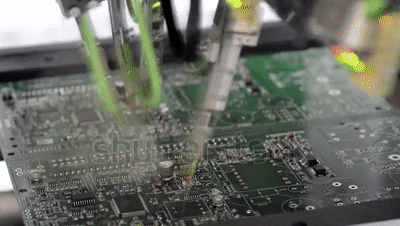If you look around, you will realize that a number of embedded hardware devices surround you. You interact with them a lot more than you apprehend; they are everywhere, starting from your coffee maker to the wearable device that keeps track of your sleep patterns. Considering the wide exposure, one might think that these devices are easy to build; however, this is not the case if there is a lack of proper hardware design and development process.
Designing a robust hardware device is not an easy task. Hardware designers have to overcome a list of challenges to create a well-executed design and development cycle. While working on an embedded system, hardware design teams need to alter their approach and try to accommodate all the defined design requirements while coping with technology limitations. These challenges cover power constraints, size limitations, performance goals, interface bandwidth, and implementing sufficient design margin.
 On top of these challenges is the need to develop production-ready designs that provide the flexibility to support future design changes and updates without needing some serious hardware modifications. The hardware design cycle should depend on some primary design areas that include design management, design leverage, system design, design flexibility, and board level design. Also, before getting started, hardware designers need to consider power consumption, memory, hardware configuration environment, as well as the programming and debugging interface of the product to be developed.
On top of these challenges is the need to develop production-ready designs that provide the flexibility to support future design changes and updates without needing some serious hardware modifications. The hardware design cycle should depend on some primary design areas that include design management, design leverage, system design, design flexibility, and board level design. Also, before getting started, hardware designers need to consider power consumption, memory, hardware configuration environment, as well as the programming and debugging interface of the product to be developed.
Apart from these considerations, in order to form a well-executed hardware design and development cycle, there is a need to adopt certain hardware design best practices.
And before you jump to implementing those practices, you need to have a proper process in place. Similar to the process documentation done during software development, you need to document a process and follow it for hardware development at the board, box, or chip level. The upside of having a documented process is to keep a check on risks and to ensure that the final product functions as intended.
Once you have the process, you can take into account the following hardware design considerations to smoothly implement that process.
1. Document design requirements
Before diving into the designing phase, hardware and firmware teams need to collaborate to create a requirement specification document for the design that they all have agreed upon. Both the teams need to discuss the design, while presenting their perspective based on their domain and expertise. Collaboration should ideally start from the early hardware design stages and should continue until the final phase of firmware development. By collaborating on product design, team members will get a clear picture of what an ideal product would look like, thus helping them with decision making and documentation of the requirement specifications. As a result, the final quality of the product would be higher as hardware and firmware teams will be on the same page and will have knowledge of the system as a whole. Documentation plays a crucial role in product design as it covers all the design details, including high-level product specifications along with low-level implementation details.
2. Adhere to standards
It goes without saying that product designers should adhere to the industry standards, which ensure proper functioning and interoperability of the system. Moreover, as an ideal hardware design practice, you can create a checklist with your own set of internal product development standards. These internal standards can be guiding principles on documentation format, quality assurance checklist, and module writing styles that are mandatory to follow for each member involved in creating the product.
Over time, the industry standards will evolve and so should your internal hardware design standards. As technology advances, adapt and change your design standards as necessary. Whenever these standards are updated or modified, they must be reviewed or verified by all the involved members. Once everyone agrees to the modifications, make the entire organization aware about these changes in standards. You can also add versioning if required.
3. Plan for contingencies
The best hardware designer will leave no scope for errors or failures; however, what could be the solution if the chip fails? When a software does not work as expected, developers use a software simulator to have a look at internal flip-flops and signals. On the other hand, in case of device driver working on a physical chip, the access to what is going on inside the chip is very restricted.
Hardware engineers can get better visibility inside the chip by adding test and debug hooks in the device, providing the designers with read/write access to internal flip-flops and signals. Such logic analyzer can be built into the chip with little additional time for designing and will occupy a small portion of silicon space, but in case of a failure, it is worth that extra effort. Furthermore, these test and debug hooks can also be used to locate and identify defects in the firmware.
4. Consider design compatibility
Whether you talk about hardware or firmware, at some point, they will be updated with new functionalities and new versions will be rolled out. In such cases, designers need to maintain compatibility in such a manner that any version of the firmware can be compatible with any version of the hardware.
Even when pairing up any firmware with any device seems to be the ideal scenario, it isn’t quite practical. However, striving for that goal will take you closer to higher compatibility. This implies that a newer version of hardware design should work seamlessly with the existing version of firmware. Similarly, an old hardware device should support newer versions of device drivers.
So, these are best practices for different aspects of hardware design. If followed religiously, these practices can make hardware design a cakewalk for your company.
eInfochips, has over two decades of experience in creating mission-critical embedded hardware designs. We are well-equipped to make products that are smaller, efficient, reliable, and economical. To know how embedded hardware can help your business, have a look at our hardware design services.












